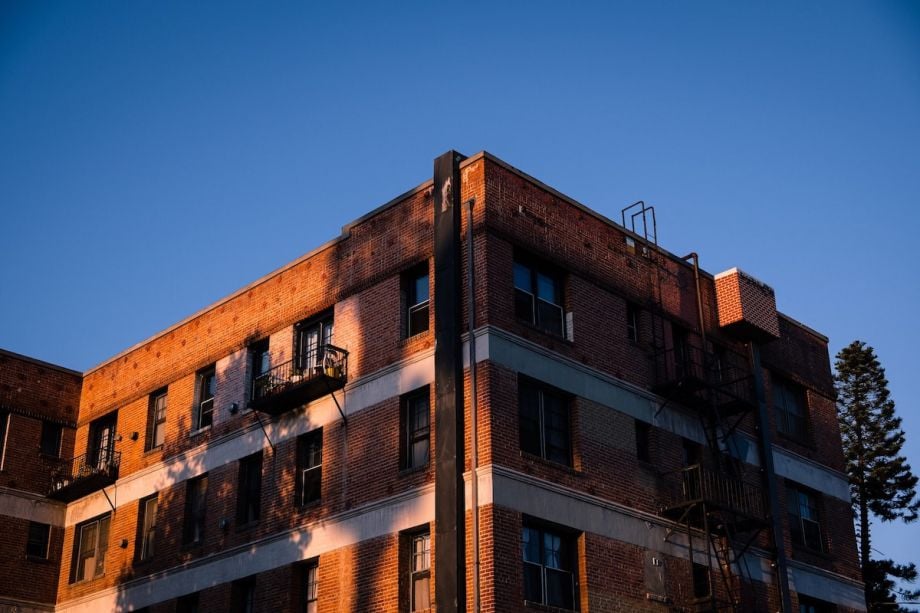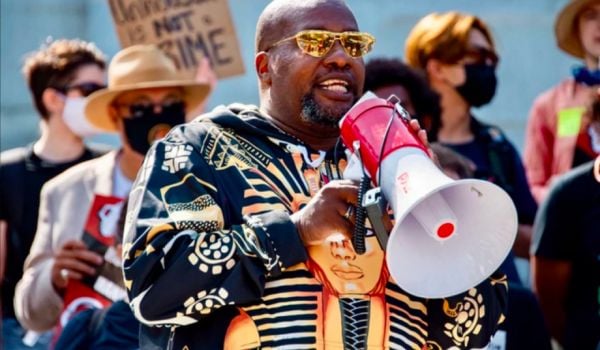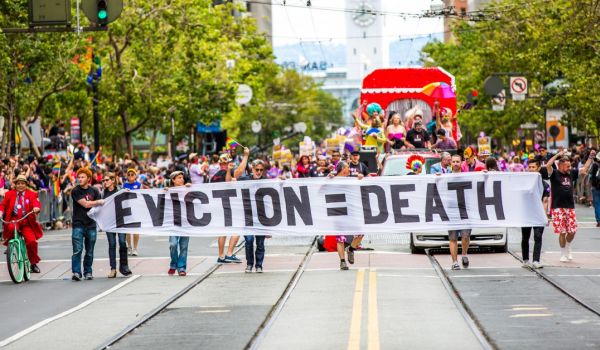This story was produced by Kaiser Health News, which publishes California Healthline, an editorially independent service of the California Health Care Foundation.
Gov. Gavin Newsom, whose administration is struggling to contain a worsening homelessness crisis despite record spending, is trying something bold: tapping federal health care funding to cover rent for homeless people and those at risk of losing their housing.
States are barred from using federal Medicaid dollars to pay directly for rent, but California’s governor is asking the administration of President Joe Biden, a fellow Democrat, to authorize a new program called “transitional rent,” which would provide up to six months of rent or temporary housing for low-income enrollees who rely on the state’s health care safety net — a new initiative in his arsenal of programs to fight and prevent homelessness.
“I’ve been talking to the president. We cannot do this alone,” Newsom told KHN.
The governor is pushing California’s version of Medicaid, called Medi-Cal, to fund experimental housing subsidies for homeless people, betting that it’s cheaper for taxpayers to cover rent than to allow people to fall into crisis or costly institutional care in hospitals, nursing homes, and jails. Early in his tenure, Newsom proclaimed that “doctors should be able to write prescriptions for housing the same way they do for insulin or antibiotics.”
But it’s a risky endeavor in a high-cost state where median rent is nearly $3,000 a month, and even higher in coastal regions, where most of California’s homeless people reside. Experts expect the Biden administration to scrutinize the plan to use health care money to pay rent; and also question its potential effectiveness in light of the state’s housing crisis.
“Part of the question is whether this is really Medicaid’s job,” said Vikki Wachino, who served as national Medicaid director in the Obama administration. “But there is a recognition that social factors like inadequate housing are driving health outcomes, and I think the federal government is open to developing approaches to try and address that.”
Bruce Alexander, a spokesperson for the Centers for Medicare & Medicaid Services, declined to say whether the federal government would approve California’s request. Yet, Biden’s Medicaid officials have approved similar experimental programs in Oregon and Arizona, and California is modeling its program after them.
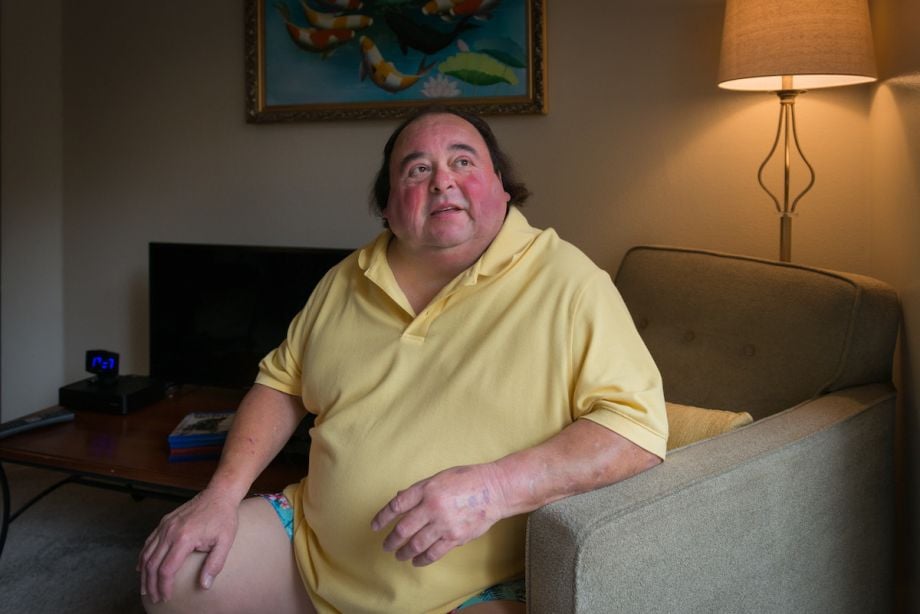
Stephen Morton was homeless for nearly two years and racked up extraordinary Medi-Cal costs due to prolonged hospitalizations and repeated emergency room trips. (Photo by Heidi De Marco / KHN)
California is home to an estimated 30% of the homeless people in the U.S., despite representing just 12% of the country’s overall population. And Newsom has acknowledged that the numbers are likely far greater than official homeless tallies show. Top health officials say that, to contain soaring safety-net spending and help homeless people get healthy, Medi-Cal has no choice but to combine social services with housing.
Statewide, 5% of Medi-Cal patients account for a staggering 44% of the program’s spending, according to state data. And many of the costliest patients lack stable housing: Nearly half of patients experiencing homelessness visited the emergency room four times or more in 2019 and were more likely than other low-income adults to be admitted to the hospital, and a large majority of visits were covered by Medi-Cal, according to the Public Policy Institute of California.
“What we have today doesn’t work,” said Dr. Mark Ghaly, secretary of the California Health and Human Services Agency, explaining his argument that housing is a critical component of health care. “Why do we have to wait so long for people to be so sick?”
The federal government has already approved a massive social experiment in California, known as CalAIM, which is transforming Medi-Cal. Over five years, the initiative is expected to pour $12 billion into new Medi-Cal services delivered outside of traditional health care. In communities across the state, it is already funding services for some low-income patients, including paying rental security deposits for homeless people and those facing eviction; delivering prepared healthy meals for people with diabetes; and helping formerly incarcerated people find jobs.
The transitional rent program would add another service to those already available, though only a sliver of the 15.4 million Medi-Cal enrollees actually receive those new and expensive social services.
Rent payments could begin as soon as 2025 and cost roughly $117 million per year once fully implemented. And while state officials say anyone who is homeless or at risk of becoming homeless would be eligible, not everyone who qualifies will receive new services due to capacity limits. Among those who stand to benefit are nearly 11,000 people already enrolled in Medi-Cal housing services.
“The ongoing conversation is how do we convince the federal government that housing is a health care issue,” said Mari Cantwell, who served as Medi-Cal director from 2015 to 2020. “You have to convince them that you’re going to save money because you’re not going to have as many people showing up at the emergency room and in long-term hospitalizations.”
Health care experiments in California and around the country that funded housing supports have demonstrated early success in reducing costs and making people healthier. But while some programs paid for housing security deposits or participants’ first month of rent, none directly covered rent for an extended period.
“Without that foundational support, we are playing in the margins,” Newsom said.
State health officials argue that paying for six months of rent will be even more successful at reducing health care costs and improving enrollees’ health, but experts say that, to work, the initiative must have strict accountability and be bundled with an array of social services.
In a precursor to the state’s current initiative, California experimented with a mix of housing assistance programs and social services through its “Whole Person Care” pilot program. Nadereh Pourat, of the UCLA Center for Health Policy Research, evaluated the program for the state concluding that local trials reduced emergency visits and hospitalizations, saving an average of $383 per Medi-Cal beneficiary per year — a meager amount compared with the program’s cost.
Over five years, the state spent $3.6 billion serving about 250,000 patients enrolled in local experiments, Pourat said.
And a randomized control trial in Santa Clara County that provided supportive housing for homeless people showed reductions in psychiatric emergency room visits and improvements in care. “Lives stabilized and we saw a huge uptick in substance use care and mental health care, the things that everybody wants people to use to get healthier,” said Dr. Margot Kushel, director of the University of California-San Francisco’s Center for Vulnerable Populations at Zuckerberg San Francisco General Hospital and Trauma Center, who worked on the study.
But insurers implementing the broader Medi-Cal initiative say they are skeptical that spending health care money on housing will save the system money. And health care experts say that, while six months of rent can be a bridge while people wait for permanent housing, there’s a bigger obstacle: California’s affordable housing shortage.
“We can design incredible Medicaid policies to alleviate homelessness and pay for all the necessary supportive services, but without the adequate housing, frankly, it’s not going to work,” Kushel said.
Newsom acknowledges that criticism. “The crisis of homelessness will never be solved without first solving the crisis of housing,” he said last week, arguing California should plow more money into housing for homeless people with severe mental health conditions or addiction disorders.
He will ask the legislature to put before voters a 2024 ballot initiative that would infuse California’s mental health system with at least 6,000 new treatment beds and supportive housing units for people struggling with mental health and addiction disorders, many of whom are homeless. The proposed bond measure would generate from $3 billion to $5 billion for psychiatric housing and treatment villages aimed at serving more than 10,000 additional people a year. The initiative also would ask voters to set aside at least $1 billion a year for supportive housing from an existing tax on California millionaires that funds local mental health programs.
“People who are struggling with these issues, especially those who are on the streets or in other vulnerable conditions, will have more resources to get the help they need,” Newsom said.
For transitional rent, six months of payments would be available for select high-need residents enrolled in Medi-Cal, particularly those who are homeless or at risk of becoming homeless — and those transitioning from more costly institutions such as mental health crisis centers, jails and prisons, and foster care. Medi-Cal patients at risk of inpatient hospitalization or who frequent the emergency room would also be eligible.
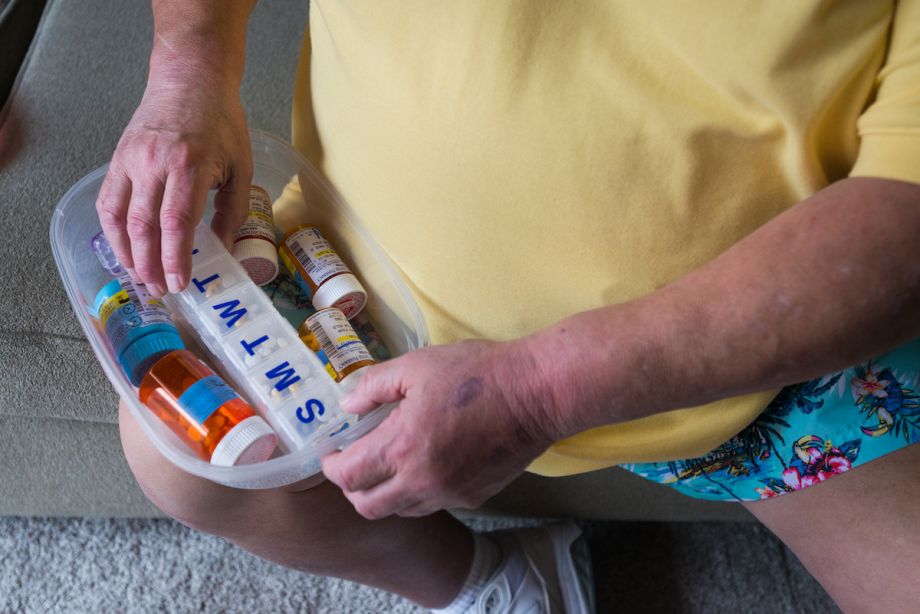
Stephen Morton has major health problems, including chronic heart disease, diabetes, and asthma. California wants to tap federal health care funding to cover rent for formerly homeless people. (Photo by Heidi De Marco / KHN)
“It’s a pretty big challenge; I’m not going to lie,” said Jacey Cooper, the Medi-Cal director. “But we know that people experiencing homelessness cycle in and out of emergency rooms, so we have a real role to play in both preventing and ending homelessness.”
Public health experts say the problem will continue to explode without creative thinking about how to fund housing in health care, but they warn the state must be wary of potential abuses of the program.
“It has to be designed carefully because, unfortunately, there are always people looking to game the system,” said Dr. Tony Iton, a public health expert who is now a senior vice president at the California Endowment. “Decisions must be made by clinicians — not housing organizations just looking for another source of revenue.”
For Stephen Morton, who lives in the Orange County community of Laguna Woods, the journey from homelessness into permanent housing illustrates the amount of public spending it can take for the effort to pay off.
Morton, 60, bounced between shelters and his car for nearly two years and racked up extraordinary Medi-Cal costs due to prolonged hospitalizations and repeated emergency room trips to treat chronic heart disease, asthma, and diabetes.
Medi-Cal covered Morton’s open-heart surgery and hospital stays, which lasted weeks. He landed temporary housing through a state-sponsored program called Project Roomkey before getting permanent housing through a federal low-income housing voucher — an ongoing benefit that covers all but $50 of his rent.
Since getting his apartment, Morton said, he’s been able to stop taking one diabetes medication and lose weight. He attributes improvements in his blood sugar levels to his housing and the healthy, home-delivered meals he receives via Medi-Cal.
“It’s usually scrambled eggs for breakfast and the fish menu for dinner. I’m shocked it’s so good,” Morton said. “Now I have a microwave and I’m indoors. I’m so grateful and so much healthier.”
KHN is a national newsroom that produces in-depth journalism about health issues. Together with Policy Analysis and Polling, KHN is one of the three major operating programs at Kaiser Family Foundation, an endowed nonprofit organization providing information on health issues to the nation.
Angela Hart, Correspondent for California Healthline, covers California health politics and policy in Sacramento and around the state, with a focus on the governor, the legislature and key elections. Previously, she covered health poliAngela Hart, Correspondent for California Healthline, covers California health politics and policy in Sacramento and around the state, with a focus on the governor, the legislature and key elections. Previously, she covered health policy and politics for Politico, with a focus on Gov. Gavin Newsom. She also covered politics and Newsom’s gubernatorial campaign for The Sacramento Bee and was the county government and politics reporter at the Santa Rosa Press Democrat in Sonoma County.

